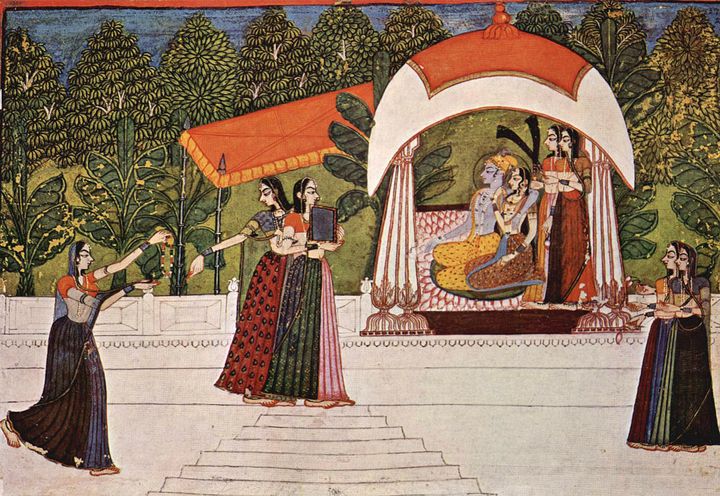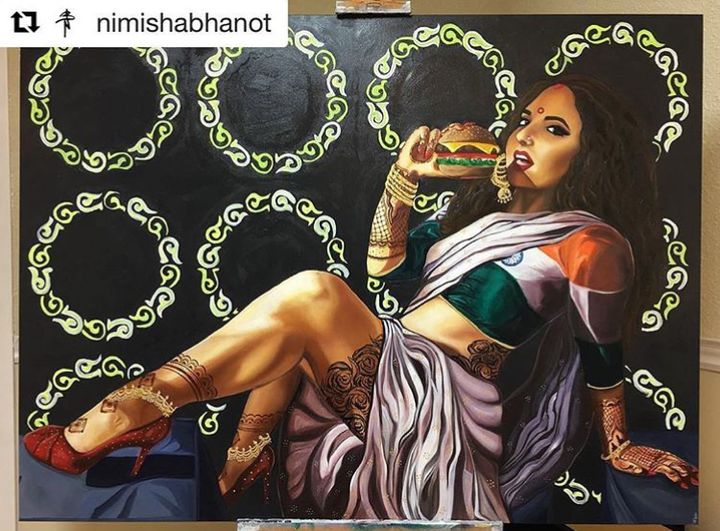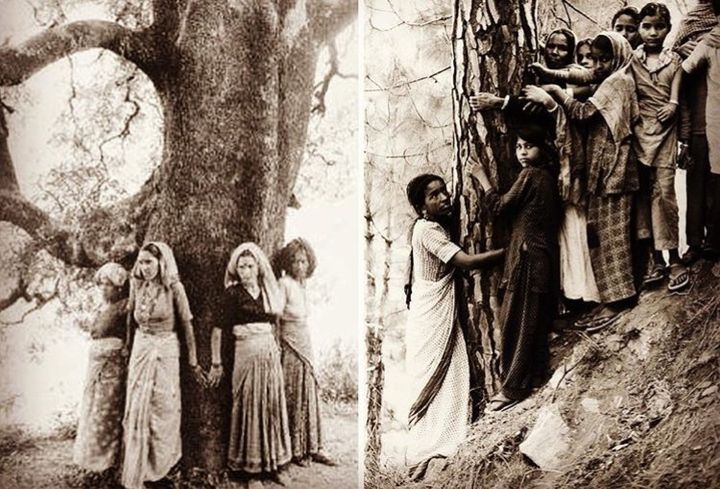The Return of the Saree was Inevitable

Image courtesy of the Pakistany Army
Rather than committing to the idea that the current fashion choices privileging saris over jeans in India is about Hindu nationalism, The New York Times ought to have taken a moment to remember that before American-owned department stores were stocked with crop tops, ballet flats, tunic tops, and 80s inspired leggings, South Asian fashionistas had long ago inherited patterns of sari blouses, jutis, kurtas, and churidars from their well-clad ancestors.

An 18th century Indian Miniature painting by Nihâl Chand
Wearing saris has more to do with bringing back India’s own fashion forward practice that was temporarily derailed by the global culture of economic liberalization and its preferential treatment of western aesthetics. It is a bit dramatic to imagine people thinking of their country while attempting to perfectly pleat their sari before tucking it in to their petticoat.
Sari pleats are not patriotic nor do they evoke the tenets of Hinduism, but they are hard to line up perfectly if you are dealing with chiffon.
Rarely do sari-wearers think of their political parties as they are deciding on which sari to add to their collection while shopkeepers quickly unfold hundreds of options in the well-stocked stores that line the streets of India. Perhaps, from time to time, when draping a cotton sari we ask ourselves if we look “too Indira Gandhi.” And if the answer is yes, some of us might be inclined to keep the sari wrapped and some of us might rip it off immediately. But I guarantee that decision has more to do with personal aesthetics than politics as it is the case that some days we want to channel our inner Indira Gandhi and other days we might need to call on our inner Zeenat Aman.

Left: Indira Gandhi, Right: Zeenat Aman
Wearing a sari is certainly a political choice, but wearing clothing items from Zara, H&M, and Gap also seem to conjure up important political questions regarding low wage workers making pleas via secret notes hidden in the clothes they toil over and, for example, the effect of fast fashion on the environment.
With the opening of India’s economic borders in 1991, denim, graphic tees, and Nike kicks caught the attention of the country’s youth while they learned to speak American-English from Monica and Rachel as Friends began its syndicated run in India. Globalization pushed American aesthetics into villages and cities throughout South Asia and, as a result, the region’s sartorial traditions took a back seat to what our aunties call “western” styles. But denim and dull white T-shirts can’t compete with the timelessness of block prints and the comfort of being wrapped in Banarsi silk.
The return of the sari was inevitable. And with its return we are witnessing the celebration of femininity in a world dominated by masculinity.

“The Bharati and the Cheeseburger” by Nimisha Bhanot
The sari seems to be coming back with a fierce feminist stance offering criticism to any and all institutions that undermine human rights and social justice. That is, for example, contemporary sari-lovers are inclined to stand up for environmental justice just as they are willing push back on the BJP’s anti-Islam platform carried out in the vilification of beef. While on the surface this might seem contradictory, the common thread can be found in the desire to assist the underprivileged and exploited.
For the BJP, and most right-wing political parties, on the other hand, the underprivileged and the easily exploited offer new opportunities to capitalize on poverty and powerlessness. India’s infamous right-wing party has consistently embraced neoliberal economic policies in the name of Hinduism such that buying any product has become a testament to one’s devoutness. And if neoliberalism is the goal of the BJP and what their ‘Hindustan’ is to mirror in the future, then the most Hindu-nationalist outfit a BJP supporter could opt to wear would be a Ganesha graphic tee from Urban Outfitters, skinny jeans made by garment workers in Malaysia, and sneakers from Indonesian sweatshops.
Moreover, “aggressively promoting traditional attire” does not have to link to a Hindu nationalist platform as it is the case the saris and sherwanis objectively look better on people. And, as we all know, PM Modi is all about looking good. Just as saris accentuate the healthy curves of a body, Kurtas and sherwanis highlight the truth and beauty of a person’s frame that the business suit hides in its attempt to create false illusions of broad shoulders.
But saris offer more than fashion, the nine yards of fabric also have an element of utility and function that most western fashion choices lack (but cheers to the slow-growing trend of dresses with pockets). Even outside of South Asia the sari has its utility, and, as evidenced by the Saree, Not sorry Movement, its most rewarding function is to push back on the anti-immigration stance shared by the majority of white or white-passing Americans and Europeans.
So the question is, if the sari is so fabulous and capable of effecting social change, why are Asgar Qadri, European anthropologist, Tereza Kuldová, and The New York Times hell-bent on limiting the revival of the sari to the terms and conditions of Hindu nationalism? Overlooking the power, strength, and effect of grassroots Indian feminist activist work is not a new practice for American media outlets and European anthropologists. Indian women have a long history of speaking truth to power while wearing saris and foreigners have an equally long history of reframing that work so the story becomes something else...just ask the women of the 1973 Chipko Movement.

Chipko Movement 1973
So I suppose the most appropriate response to The New York Times’ wildly inaccurate reading of the sari as a symbol of Hindu nationalism is to remind all the sari-wearers throughout the world that you do not have to apologize for wearing a sari. Wearing a sari is not anti-Islam nor is it pro-Hinduism.
Wearing a sari and not wearing pants does not limit your feminist practice; you are not required to reflect the images of heteronormative men in order to experience equality and basic human rights. Wearing a sari is your choice and if you decide to wear one then feel proud and confident as it moves with you.
And if you decide to eat a cheeseburger while wearing a sari, don’t forget to order fries.
